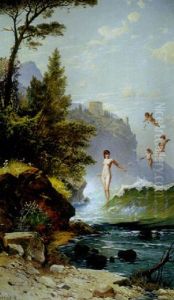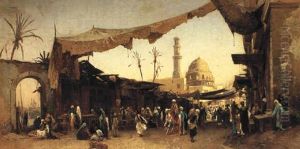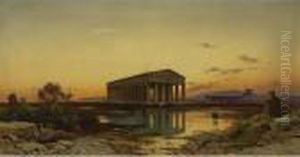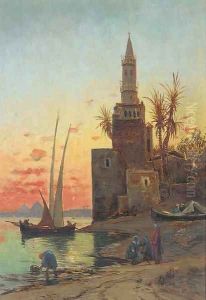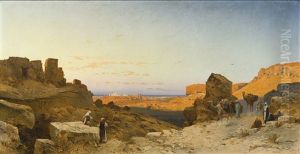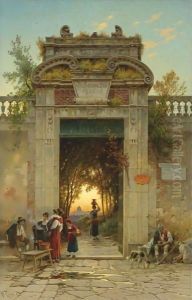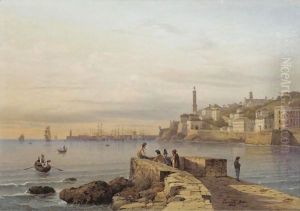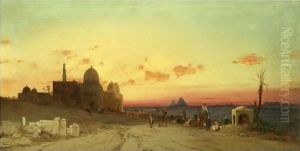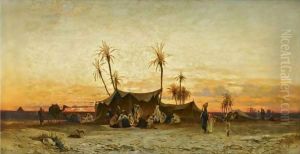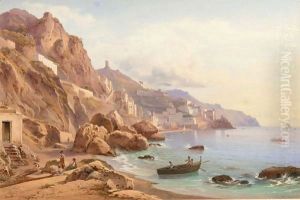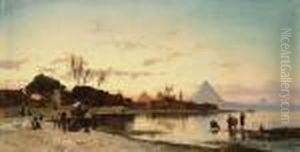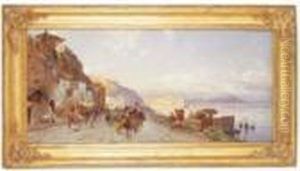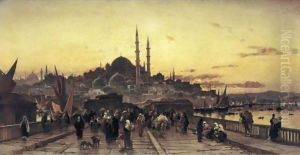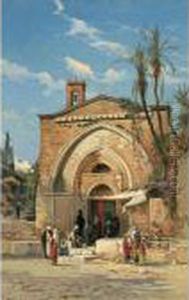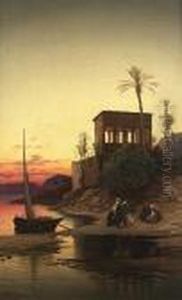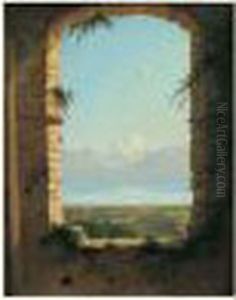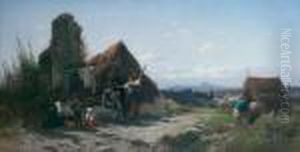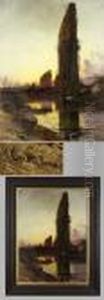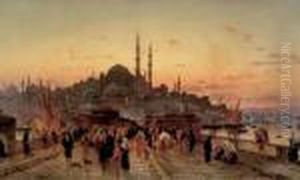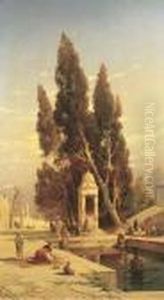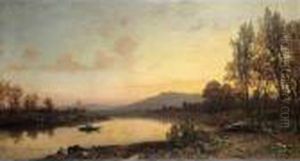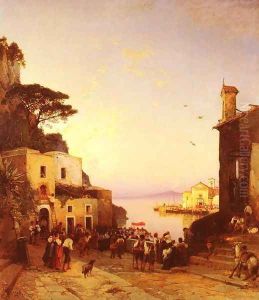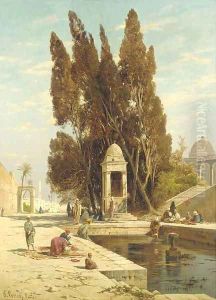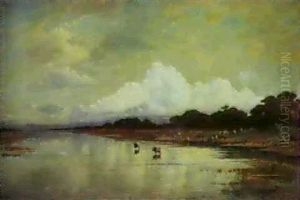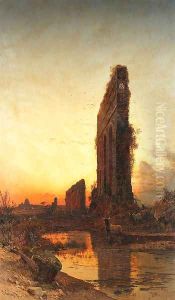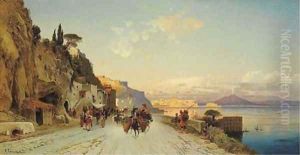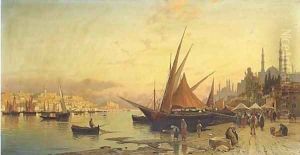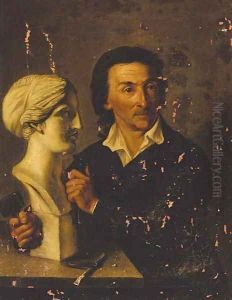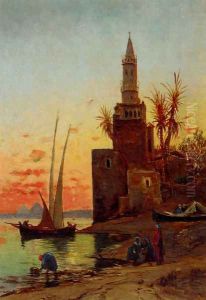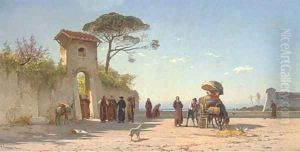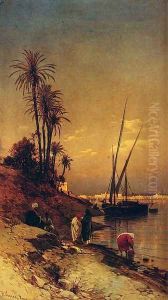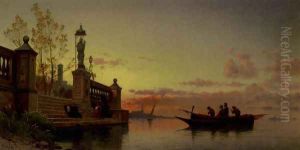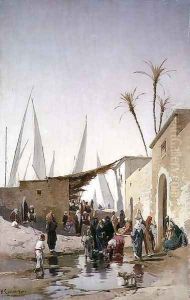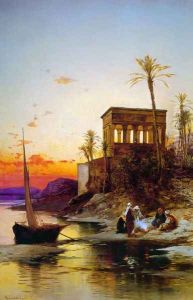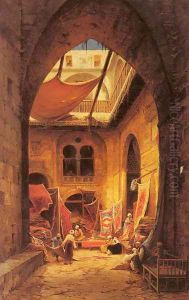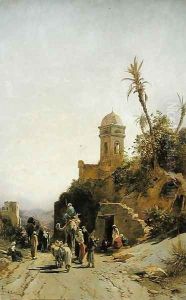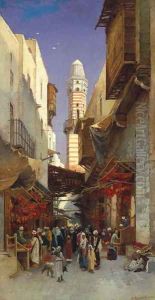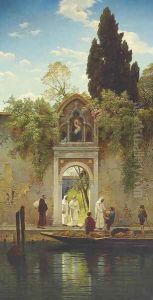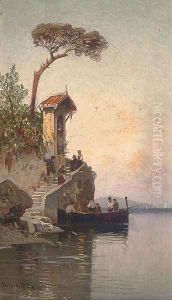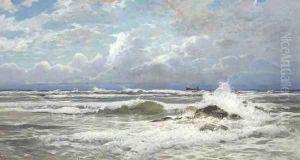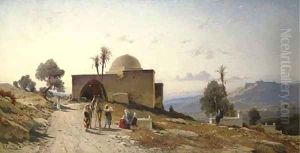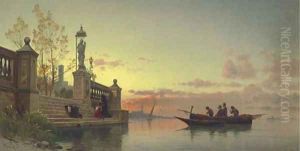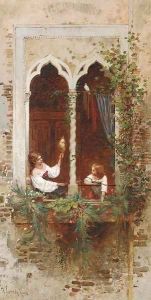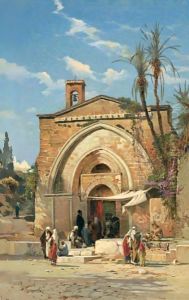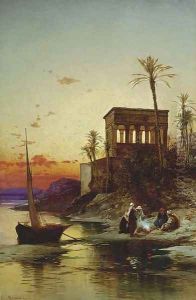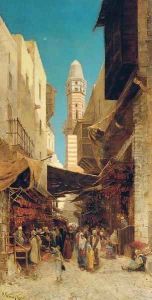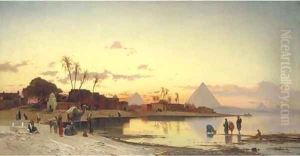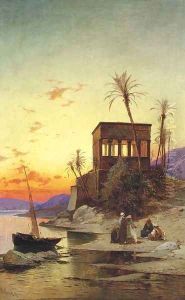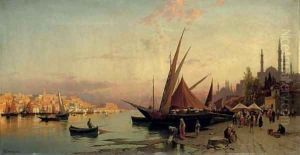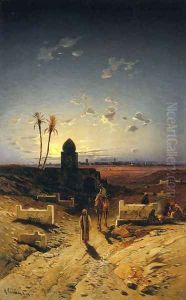Hermann David Solomon Corrodi Paintings
Hermann David Solomon Corrodi was an Italian painter of the 19th century, known for his Orientalist and landscape works. He was born on July 9, 1844, in Frascati, a town near Rome, Italy. Hermann was part of a family of artists, as his father, Salomon Corrodi, was also a painter, and his sister, Arnolda Corrodi, was an art teacher. From a young age, Hermann was exposed to art and was trained by his father before attending the Accademia di San Luca in Rome.
After his formal education, Corrodi traveled extensively throughout the Middle East, Northern Africa, and Europe, drawing inspiration from the diverse landscapes and cultures he encountered. His travels significantly influenced his artistic style, leading him to produce works that depict exotic scenes with a high degree of realism and detail. He became particularly famous for his Orientalist paintings, which often featured historical and biblical scenes set in the landscapes of Egypt, Turkey, and Syria.
Corrodi established a successful career in Rome, where he became a popular figure among tourists, especially the British, who were fascinated with his depictions of the Orient. He often received commissions from wealthy patrons, including members of the British royalty, such as Queen Victoria, who purchased one of his works for her collection.
In addition to his Orientalist paintings, Corrodi also created Italian landscapes and coastal scenes, capturing the beauty of his native country with the same luminosity and precision that characterized his Eastern subjects. His work was well-received, and he exhibited in major cities across Europe, including Paris, London, and Vienna.
Hermann Corrodi's style is characterized by its romanticism and attention to lighting, with a particular focus on the effects of sunlight and shadows. His use of color was vibrant, yet harmonious, and he skillfully rendered atmospheric effects in his paintings.
Corrodi's legacy lived on through his art, which continued to be admired after his death on January 30, 1905, in Rome. Today, his paintings can be found in various art collections around the world, and he is remembered as a significant figure in the Orientalist art movement, as well as a master of 19th-century landscape painting.
